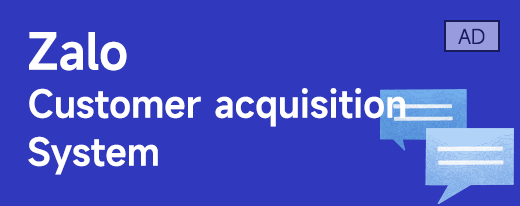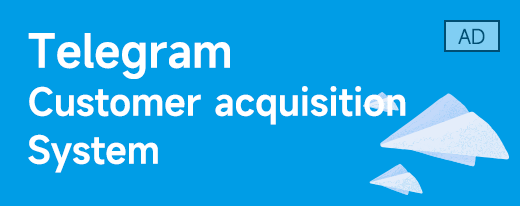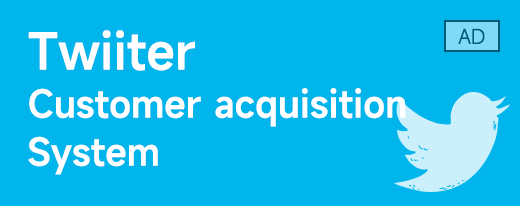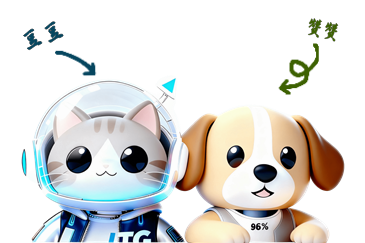In Telegram (TG) marketing, many enterprises fall into the trap of "evaluating effectiveness based on intuition" — they judge the success or failure of campaigns only by "how many messages were sent" or "how many new group members were added," while ignoring core indicators such as "real reach rate" and "effective engagement rate." This ultimately leads to wasted marketing resources and misaligned subsequent strategies. Telegram detection is precisely the key to solving this problem: professional TG detection helps enterprises see through "surface-level data" to uncover the true effectiveness of marketing campaigns; relying on the TG detection function of ITG Global Screening, enterprises can further leverage multi-dimensional data collection and automated effectiveness analysis to shift marketing decisions from "experience-based judgment" to "data-driven decision-making." Starting from the full lifecycle of marketing campaigns, this article will explain in detail how TG detection accurately evaluates effectiveness, and provide enterprises with actionable data-driven evaluation solutions by combining practical methods from ITG Global Screening.
When conducting TG marketing, many enterprises only look at "surface-level data" to evaluate effectiveness, failing to recognize the invalid components behind the data — leading to decision biases. The following 3 pain points can only be completely resolved through TG detection:
Enterprises often use metrics like "sent campaign messages to 100,000 TG accounts" or "reach volume of 100,000" as evaluation criteria, but remain unaware that 30%-60% of these accounts are invalid (empty numbers, zombie accounts, unregistered accounts). Without TG detection, the actual real reach may be only 30,000, yet enterprises mistakenly believe the campaign met expectations and continue investing resources, resulting in waste.
Typical Case: A cross-border 3C enterprise sent new product campaign messages to 80,000 TG accounts, with backend data showing "80,000 reached." However, TG detection by ITG Global Screening revealed 42,000 of these accounts were invalid, leaving a real reach of only 38,000 (real reach rate below 50%) — making the previous effectiveness evaluation completely inaccurate.
Some enterprises treat "group message count" or "link click volume" as core evaluation indicators, but fail to distinguish between "real user engagement" and "malicious engagement" (e.g., zombie account spamming, drainage account clicking external links). Without TG detection, they may count 60 out of 100 "engagements" as valid (when they are actually malicious), mistakenly believing the campaign is popular and leading to misaligned follow-up strategies.
Data Reference: Through TG detection by ITG Global Screening, it was found that in the engagement data of enterprise TG marketing campaigns, an average of 35% is zombie account spamming (meaningless messages like "support" or "good"), 20% is drainage account clicking external links (redirecting to other platforms), and only 45% is real effective engagement.
Enterprises often focus on "how many orders a campaign generates," but overlook "whether converting users are part of the target audience." If conversions mostly come from low-value, non-target users (e.g., casual one-time buyers), short-term conversion volume may be high but long-term repurchase rates low — resulting in poor ROI (Return on Investment). Without TG detection, enterprises cannot identify the attributes of converting users, leading them to mistakenly label the campaign "high-converting" and continue investing resources without long-term gains.
The TG detection function of ITG Global Screening is not just a "data statistics tool" — it provides accurate evaluation of TG marketing campaigns from four core dimensions: "reach, engagement, conversion, and attribution." Its key capabilities are as follows:
ITG Global Screening’s TG detection uses "account validity verification" to accurately calculate the real reach rate of marketing campaigns, avoiding interference from invalid accounts:
- Detection Logic: For TG accounts targeted in the campaign, batch verify "whether registered on TG," "whether active," and "whether a virtual number." After eliminating invalid accounts, count the number of real reachable accounts.
- Core Indicator: Real reach rate = (Number of real valid accounts / Total targeted accounts) × 100%. This indicator better reflects campaign reach effectiveness than "surface-level reach volume."
- Operation Method: Upload the list of campaign-targeted accounts in the ITG backend, select "Reach Effect Detection," and a real reach rate report (including invalid account types such as empty number ratio and zombie account ratio) will be generated in 1-2 hours.
A foreign trade enterprise ran a procurement festival campaign, initially reporting "reached 100,000 accounts." After TG detection by ITG, only 48,000 accounts were found to be valid (real reach rate of 48%). The enterprise promptly adjusted its follow-up push strategy to focus resources on valid accounts, doubling reach efficiency.
ITG Global Screening’s TG detection distinguishes between "real engagement" and "malicious engagement," making engagement data more actionable:
- Detection Dimensions:
- Zombie account engagement identification: Mark engagements from zombie accounts, such as "meaningless messages" or "high-frequency spamming" (over 5 messages per minute).
- Drainage account engagement identification: Track accounts that click external links and determine if they are "click-only, no-conversion" drainage accounts.
- Core Indicator: Effective engagement rate = (Number of real user engagements / Total engagements) × 100%. Real user engagements include "valuable messages" (e.g., inquiring about product details) and "effective clicks" (redirecting to campaign landing pages and staying for over 30 seconds).
- Result Presentation: Generates an "Engagement Quality Report" showing effective engagement rate, the proportion of various malicious engagements, and tags for real engaging users (e.g., region, interests).
A beauty brand ran a new product trial campaign, initially reporting "500 engagements." TG detection by ITG revealed only 220 were effective (effective engagement rate of 44%), with the remaining 280 being zombie account spam. The brand adjusted its engagement incentive strategy, increasing the effective engagement rate to 75% afterward.
ITG Global Screening’s TG detection extracts attribute tags of converting users to evaluate conversion accuracy, providing a basis for optimizing follow-up strategies:
- Detection Logic: For TG users who converted (e.g., placing orders, leaving contact information) during the campaign, extract "basic attributes" (age, gender, region), "behavioral attributes" (activity level, engagement frequency), and "demand attributes" (purchase preferences, price sensitivity).
- Core Indicator: Target user conversion ratio = (Number of conversions from target audience / Total conversions) × 100%. The target audience must be defined in advance (e.g., "females aged 25-35 with cross-border e-commerce needs").
- Application Value: If the target user conversion ratio is low (e.g., below 40%), the campaign’s reach is imprecise, and account screening strategies need adjustment. If the ratio is high (e.g., above 70%), the reach method for this audience can be replicated.
A cross-border apparel enterprise ran a promotion campaign with 120 total conversions. TG detection by ITG revealed only 45 conversions came from the target audience ("aged 18-30 + following fashion channels"), accounting for 37.5%. The enterprise adjusted its account screening rules to prioritize reaching the target audience, increasing the target user conversion ratio to 68% and improving the repurchase rate by 30%.
ITG Global Screening’s TG detection traces the specific sources of marketing campaign effectiveness to identify high-contribution links, helping optimize resource allocation:
- Detection Logic: Track the full user journey from "seeing TG campaign information" to "completing conversion," marking "source channels" (e.g., TG group pushes, channel posts, friend shares) and "reach methods" (e.g., text messages, image links, video promotions).
- Core Indicators:
- Channel conversion contribution rate = (Conversions from a channel / Total conversions) × 100%.
- Click conversion rate by reach method = (Clicks from a method / Reach from a method) × 100%.
- Application Value: If "TG group pushes" contribute 60% of conversions, increase resource investment in groups. If "video promotions" have 3x the click conversion rate of "text messages," prioritize video reach in the future.
A home goods enterprise ran an anniversary campaign. TG detection by ITG revealed "precision industry group pushes" contributed 58% of conversions, while "general channel posts" contributed only 12%. The enterprise subsequently allocated 70% of its marketing resources to precision groups, increasing overall conversion rates by 45%.
Combined with the TG detection function of ITG Global Screening, enterprises can complete accurate effectiveness evaluation of TG marketing campaigns in the following 5 steps, taking only 1-2 days:
First, based on the campaign type (e.g., new product promotion, sales campaign, user acquisition), define core evaluation goals and corresponding detection dimensions:
- If the goal is "improve reach efficiency": Prioritize "Real Reach Rate Detection."
- If the goal is "obtain effective feedback": Prioritize "Effective Engagement Rate Analysis."
- If the goal is "improve accurate conversions": Prioritize "Converting User Attribute Profiling" and "Marketing Attribution Analysis."
Gather core campaign-related data to ensure complete detection data:
- Basic Data: List of TG accounts targeted in the campaign (Excel/CSV format), engagement records during the campaign (group messages, link clicks), and conversion data (order numbers, contact-submitting user accounts).
- Import Operation: Log in to ITG Global Screening, enter the "TG Marketing Effectiveness Evaluation" module, upload the above data as prompted, and the system will automatically match and link accounts.
Select detection dimensions based on evaluation goals and launch detection:
- Select Detection Items: E.g., "Real Reach Rate Detection + Effective Engagement Rate Analysis + Conversion Attribution Analysis."
- Wait for Results: The system automatically processes data and generates a "TG Marketing Effectiveness Evaluation Report" in 1-2 hours, including core indicators, data charts, and problem diagnosis.
Focus on 3 types of core information in the report to identify campaign pain points:
- Goal Achievement: Compare against preset targets (e.g., "real reach rate target of 60%, actual 48%") to judge success.
- Data Anomalies: E.g., "effective engagement rate of only 30%, with 50% from zombie accounts" indicates poor engagement quality.
- Strengths/Weaknesses: E.g., "group pushes contribute 70% of conversions, channel posts only 15%" highlights strong and weak channels.
Adjust subsequent TG marketing strategies based on evaluation results:
- Low Real Reach Rate: Use ITG’s TG detection to screen valid accounts before future pushes, eliminating invalid resources.
- Low Effective Engagement Rate: Optimize engagement incentives (e.g., "lotteries for valuable messages") to reduce zombie account interference.
- Low Target Conversion Ratio: Adjust account screening tags to focus on the target audience.
- Uneven Channel Contribution: Allocate more resources to high-contribution channels (e.g., increase investment in precision groups).
A cross-border e-commerce enterprise used this process to evaluate its "Black Friday promotion campaign," discovering a real reach rate of only 42%, effective engagement rate of 38%, and low conversion contribution from "general channels." After optimization, the next campaign achieved a real reach rate of 68%, effective engagement rate of 72%, and overall ROI growth of 1.8x.
Enterprises often misinterpret data due to cognitive biases when using TG detection to evaluate effectiveness. The following 4 misunderstandings require special attention:
Truth: Evaluation data for a single campaign is only meaningful when viewed alongside long-term trends. Use ITG’s TG detection to record core indicators (e.g., real reach rate, effective engagement rate) for each campaign, creating an "effectiveness trend chart" to judge whether strategy optimizations are working (e.g., "real reach rate gradually increased from 45% to 70%").
Truth: Marketing effectiveness is the result of multiple indicators working together. For example, "high real reach rate but low effective engagement rate" may indicate unappealing campaign content (not a reach issue). Use ITG’s TG detection to view "multi-indicator correlation analysis" (e.g., the link between reached audience attributes and engagement rate) to avoid misjudgments based on a single indicator.
Truth: Different types of TG marketing campaigns require different evaluation standards — user acquisition campaigns prioritize "real reach rate," conversion campaigns prioritize "target conversion ratio," and engagement campaigns prioritize "effective engagement rate." Select corresponding evaluation templates in the ITG backend based on campaign type to avoid distorted evaluations from uniform standards.
Truth: TG detection data reflects "objective effectiveness," but users’ subjective feedback (e.g., real inquiries in groups, comment suggestions) is also important. Combine ITG detection’s "real engagement content extraction" function to review specific user feedback, making decisions more comprehensive (e.g., if data shows high conversions but users complain about "slow logistics," optimize logistics processes).
As evident from the above, ITG Global Screening’s TG detection is far more than a "data statistics tool" — it is the "core hub" for evaluating the effectiveness of enterprise TG marketing campaigns. It cuts through surface-level data to reveal true effectiveness, identifies invalid components to pinpoint core issues, and provides data support for optimizing follow-up strategies — ensuring every marketing resource is used efficiently.
For enterprises, competition in TG marketing has long entered the "refined operation" era; the days of making decisions based solely on "surface-level data" are over. Leveraging TG detection for data-driven decisions not only improves the effectiveness of individual campaigns but also accumulates long-term user and channel data assets, building sustainable marketing advantages. Remember: In TG marketing, "understanding how effective a campaign is" is more important than "how many resources are invested" — and TG detection is the key tool to help you see the truth of campaign effectiveness.










